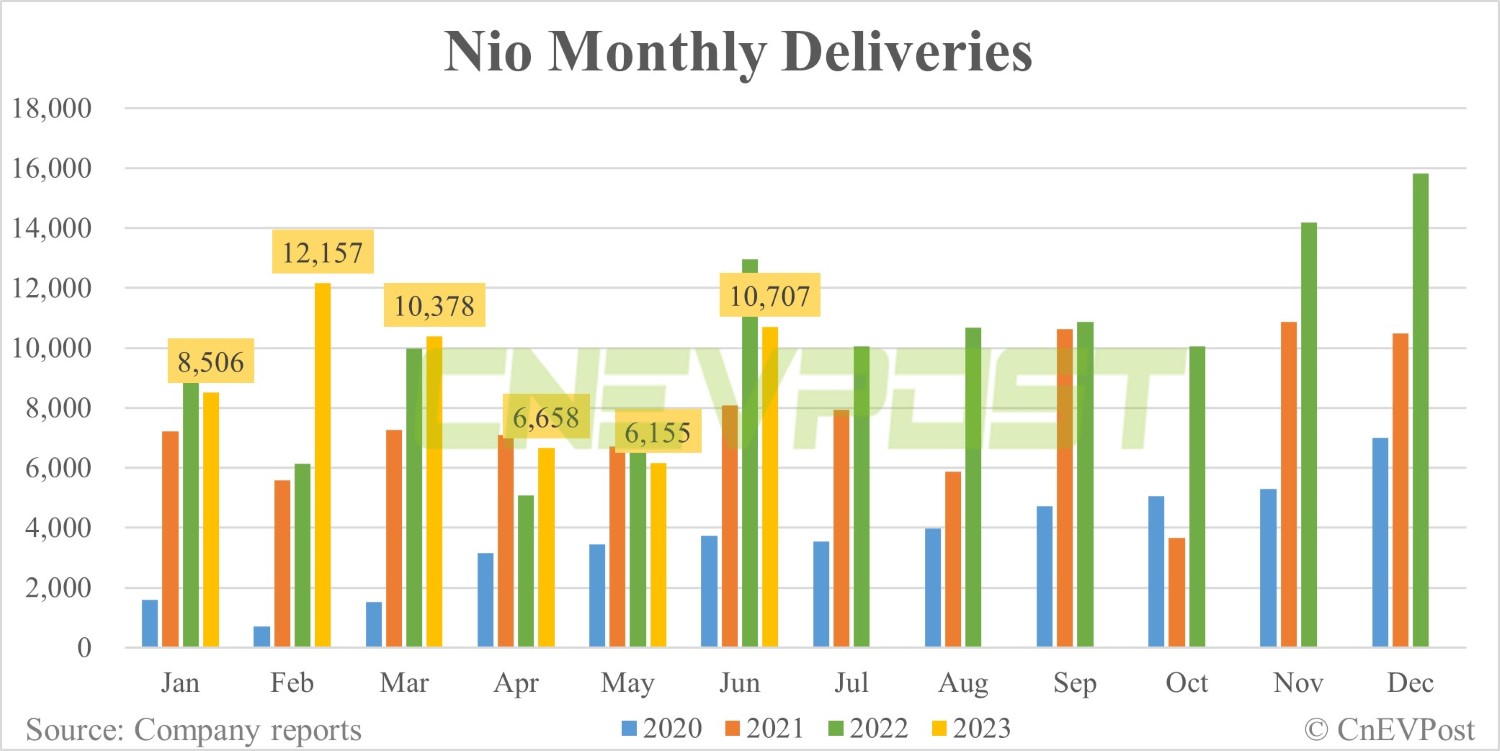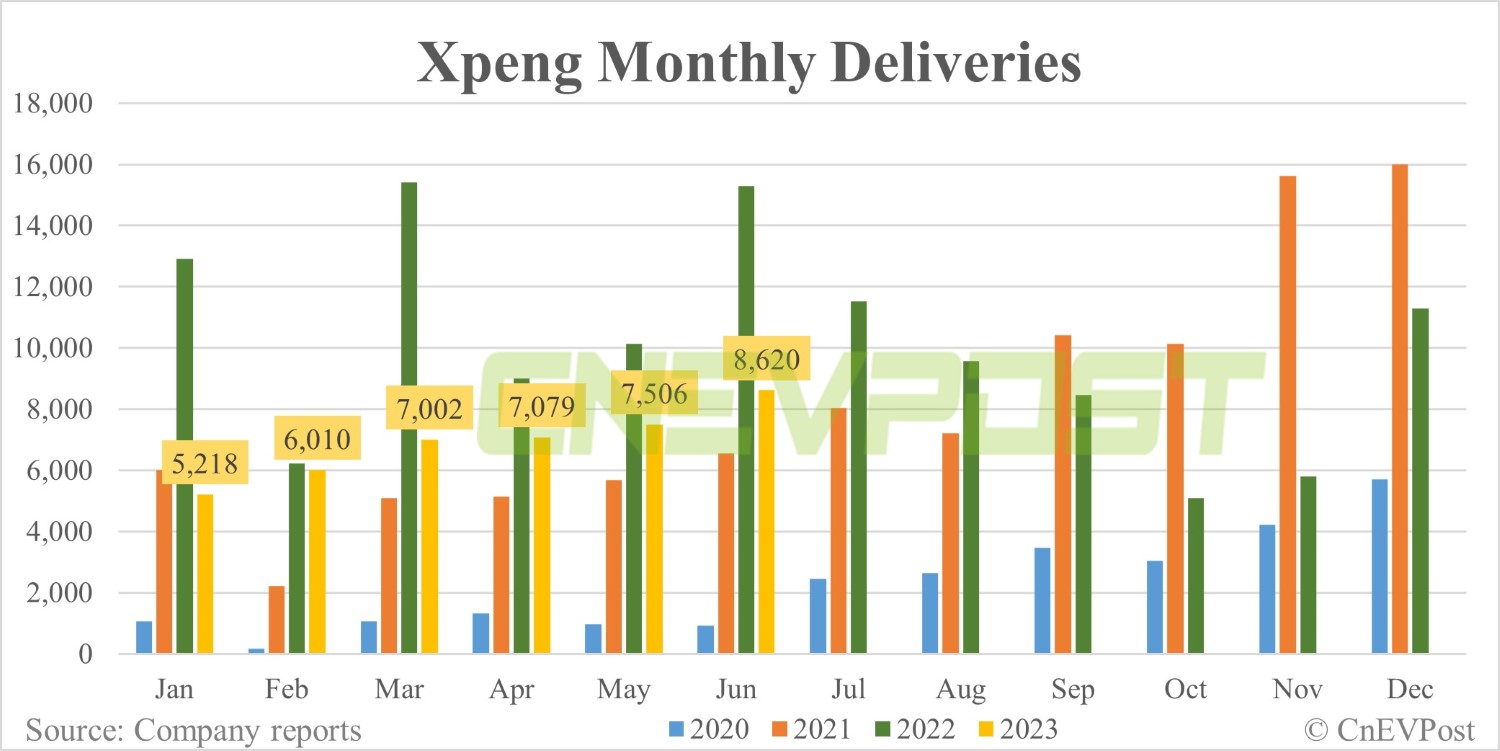Since March, the Qin family has been the top-selling BYD model in monthly sales.

BYD today announced its new energy vehicle (NEV) sales for June, and later provided a breakdown of the different models.
The Qin family of models sold a record 44,239 units in June, making it the highest-selling BYD model for the month. This represents a 66.17 percent year-on-year increase and a 1.10 percent increase from May.
In the first half of the year, the Qin family of models sold 215,773 units, up 47.05 percent year-on-year.
From March to June, the Qin family was the highest-selling BYD model in monthly sales, figures monitored by CnEVPost show.
On February 10, BYD let a facelift of the plug-in hybrid sedan Qin Plus DM-i go on sale, offering five versions with a starting price range of RMB 99,800 ($13,760) to RMB 145,800.
This is the first time BYD has made a model with its DM-i powertrain start at less than RMB 100,000.
The Song family of models sold 42,388 units in June, making it the second highest-selling BYD model in June. This represents a 32.14 percent year-on-year increase and an 11.51 percent increase from May.

In the first half of the year, Song family models sold 259,013 units, an increase of 59.01 percent year-on-year.
The BYD brand includes the Dynasty series and the Ocean series. Song family models include the Song Pro and Song Max DM-i in the Dynasty series, and the Song Plus EV and Song Plus DM-i in the Ocean series.
In June, 16,453 units of the Dynasty series Song were sold and 25,935 units of the Ocean series Song Plus were sold.
BYD Yuan family models sold 33,935 units in June, up 71.99 percent year-on-year but down 5.25 percent from May.
In the first half of the year, the Yuan family of models sold 206,153 units, up 162.07 percent year-on-year.
The NEV maker launched the 2023 Yuan Pro on May 31 with a starting price of RMB 95,800.

BYD Dolphin sold 31,140 units in June, up 200.12 percent year-on-year and 1.50 percent from May.
In the first half of the year, BYD Dolphin sold 162,848 units, an increase of 178.31 percent year-on-year.

BYD Han family models sold 23,206 units in June, down 8.78 percent year-on-year, but up 13.83 percent from May.
In the first half of the year, the Han family of models sold 97,223 units, up 86.14 percent year-on-year.
On March 16, BYD let the 2023 Han EV go on sale. On May 18, BYD let the Han DM-i and Han DM-p facelift models go on sale.

BYD Seagull sold 23,005 units in June. The model was launched on April 26 with a starting price of RMB 73,800, making it the cheapest BYD model.
From April to June, BYD Seagull sold 38,805 units.

BYD Tang sold 12,657 units in June, up 55.61 percent year-on-year and 6.62 percent from May.
In the first half of the year, the Tang sold 69,339 units, up 24.21 percent year-on-year.
BYD made the 2023 Tang DM-i available on March 16 with a starting price of RMB 209,800.

BYD Chaser 05 sold 10,222 units in June, up 36.95 percent year-on-year and down 2.25 percent from May.

In the first half of the year, 39,906 units of the model were sold.
The BYD Seal sold 8,134 units in June, up 0.68 percent from May. The model sold 42,797 units in the first half of the year.
On May 10, BYD officially made the updated version of the Seal available, with a starting price of RMB 23,000 lower than the previously available model.

BYD Frigate 07 sold 8,037 units in June, down 19.67 percent from May. In the first half of the year, 47,667 units of the model were sold.

BYD sold 253,046 NEVs in June, up 88.79 percent from 134,036 units a year ago and up 5.34 percent from 240,220 units in May, according to data released earlier today.
This includes 251,685 new energy passenger vehicles, and 1,361 new energy commercial vehicles.
BYD's Dynasty series passenger cars sold 130,490 units in June, and the Ocean series sold 11,045 units.
($1 = RMB 7.2523)
BYD sells record 253,046 NEVs in Jun, sales in H1 exceed 1.25 million
The post BYD Jun sales breakdown: Qin 44,239, Song 42,388 appeared first on CnEVPost.
For more articles, please visit CnEVPost.

























